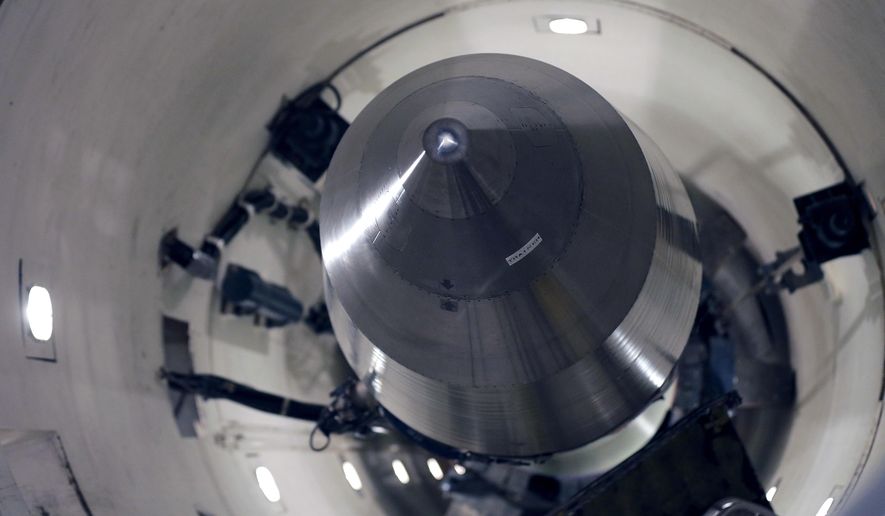The U.S. Air Force launched an unarmed Minuteman III intercontinental ballistic missile late Thursday from Vandenberg Space Force Base in southern California. The test reentry vehicle flew about 4,200 miles to the Kwajalein Atoll in the Marshall Islands, the Air Force said Friday.
Air Force officials insist the launch wasn’t the result of current world events and said similar missions have occurred more than 300 times in the past.
“A test launch displays the heart of our deterrence mission on the world’s stage, assuring our nation and its allies that our weapons are capable and our Airmen are ready and willing to defend peace across the globe at a moment’s notice,” Gen. Thomas A. Bussiere, the head of Air Force Global Strike Command, said in a statement following the launch.
Air Force officials said events such as Thursday’s test ICBM launch are intended to verify the accuracy and reliability of the weapon system, providing “valuable data” to ensure a safe and secure nuclear deterrent.
“This launch showcases the redundancy and reliability of our strategic deterrence systems while sending a visible message of assurance to allies,” Col. Christopher Cruise, commander of the 377th Test Evaluation Group, said in a statement.
Thursday’s test launch was conducted by crews from the 91st Missile Wing at Minot Air Force Base in North Dakota.
The initial Minuteman I ICBM was deployed in the early 1960s and has been regularly upgraded since then. The Air Force wants to replace it with the LGM-35A Sentinel missile, with the switchover expected to start by 2029. Until then, the Air Force on Thursday said they were “committed to ensuring Minuteman III remains a viable deterrent.”
The Air Force ICBM force is one leg of the U.S. nuclear triad, comprised of ground-launched missiles; Navy nuclear ballistic missile submarines; and the Air Force’s nuclear-capable bomber fleet of B-52H Stratofortress and B-2A Spirit aircraft.
• Mike Glenn can be reached at mglenn@washingtontimes.com.




Please read our comment policy before commenting.